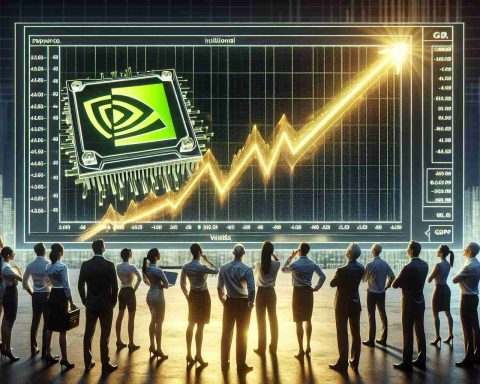- Intel is making a significant $100 billion investment in U.S. chip manufacturing to enhance its industry presence.
- The company aims to reduce reliance on Taiwan and manage geopolitical risks through domestic production.
- Strategic alliances, including potential collaborations with Nvidia, are central to Intel’s plan.
- Challenges include adopting advanced manufacturing technologies quickly and competing with established leaders like TSMC and Samsung.
- Intel’s efforts could shift global supply dynamics and alter the industry’s competitive landscape.
In the rapidly evolving tech landscape, Intel is plotting a bold comeback with an enormous $100 billion investment in domestic chip-manufacturing facilities. Once seemingly overshadowed by rivals like AMD and AI juggernaut Nvidia, Intel now aims to revolutionize its presence in the semiconductor world.
A New Chapter of Innovation
After years of fierce competition that stripped away its market value, Intel stands at a transformative crossroads. The company is embarking on an ambitious journey, intending to lessen dependency on Taiwan’s semiconductor prowess while taming geopolitical disruptions through robust domestic productions. This strategic pivot offers the company a chance to redefine itself as a formidable leader in the chip manufacturing landscape.
Forging New Alliances
The heart of Intel’s strategy isn’t just about building state-of-the-art facilities. It’s also about crafting powerful alliances. By re-centering production efforts in the U.S., Intel aims to attract industry stalwarts—even potential collaborations with giants like Nvidia are on the horizon. This move could shake up global supply dynamics and mitigate regional risks, positioning Intel as a safer and more attractive partner in a volatile market.
Challenges Loom Large
However, Intel’s ambitious plans come with significant hurdles. The key lies in swiftly embracing cutting-edge manufacturing technologies, an area where rivals like TSMC and Samsung have already surged ahead. Competitive pricing, timely execution of production plans, and maintaining an innovation momentum are crucial for Intel’s resurgence.
In the tech universe’s ongoing saga, while Nvidia dazzles, Intel emerges with a quiet determination. Its impressive investment signals more than just a comeback—it could ultimately shift the industry’s balance. As Intel reshapes its narrative, only time will reveal if this audacious gamble will usher in a new era of dominance.
Intel’s $100 Billion Gamble: Can It Upturn the Semiconductor Landscape?
Q1: What are the potential pros and cons of Intel’s $100 billion investment in domestic chip manufacturing?
Pros:
– Increased Security and Stability: By investing in domestic facilities, Intel reduces reliance on international suppliers, especially those in politically sensitive regions, enhancing national security and supply chain stability.
– Job Creation: Such a substantial investment is likely to create thousands of jobs, benefiting the U.S. economy.
– Technological Advancements: The initiative could spur further innovation in chip technology, allowing Intel to regain a competitive edge.
Cons:
– High Upfront Costs: The massive financial outlay involves significant risks and may strain Intel’s resources.
– Implementation Challenges: Successful execution requires overcoming technical challenges and adhering to timelines, where Intel has struggled in past projects.
– Competition with Established Leaders: Rivals like TSMC and Samsung have maintained their lead in manufacturing technologies, posing a formidable challenge for Intel’s catch-up strategy.
Q2: What impact might Intel’s strategy have on the global semiconductor market?
Intel’s move is poised to alter global supply chain dynamics in several ways:
Market Diversification: By centralizing more production in the U.S., Intel aids in diversifying supply sources, thus relieving some of the monopolistic pressures currently prevalent in the industry.
Collaborative Opportunities: Potential partnerships with industry leaders like Nvidia could foster shared advancements and technological synergies, benefiting various sectors reliant on semiconductor technology.
Increased Regional Competition: Enhanced U.S. capabilities may compel other countries and companies to bolster their infrastructures, resulting in a more competitive and balanced global market.
Q3: How does Intel’s future in semiconductor manufacturing compare with its competitors?
Competitive Edge:
– Technological Partnerships: By establishing collaborations, Intel positions itself to learn and implement advanced manufacturing techniques.
– Domestic Focus: Emphasizing U.S. production aligns with increasing nationalistic policies, potentially garnering governmental support and incentives.
Limitations:
– Current Technological Gap: Despite considerable investment, Intel still lags behind TSMC and Samsung in cutting-edge manufacturing processes.
– Brand Perception: Intel needs to overcome its past reliance on legacy technologies and reshape its image as a modern, innovative brand leader.
As Intel advances, it aims to bridge these gaps and revolutionize its offerings, steering the sector into a new era of diversified supply chains and technological evolution.
For more information, visit:
Intel

















